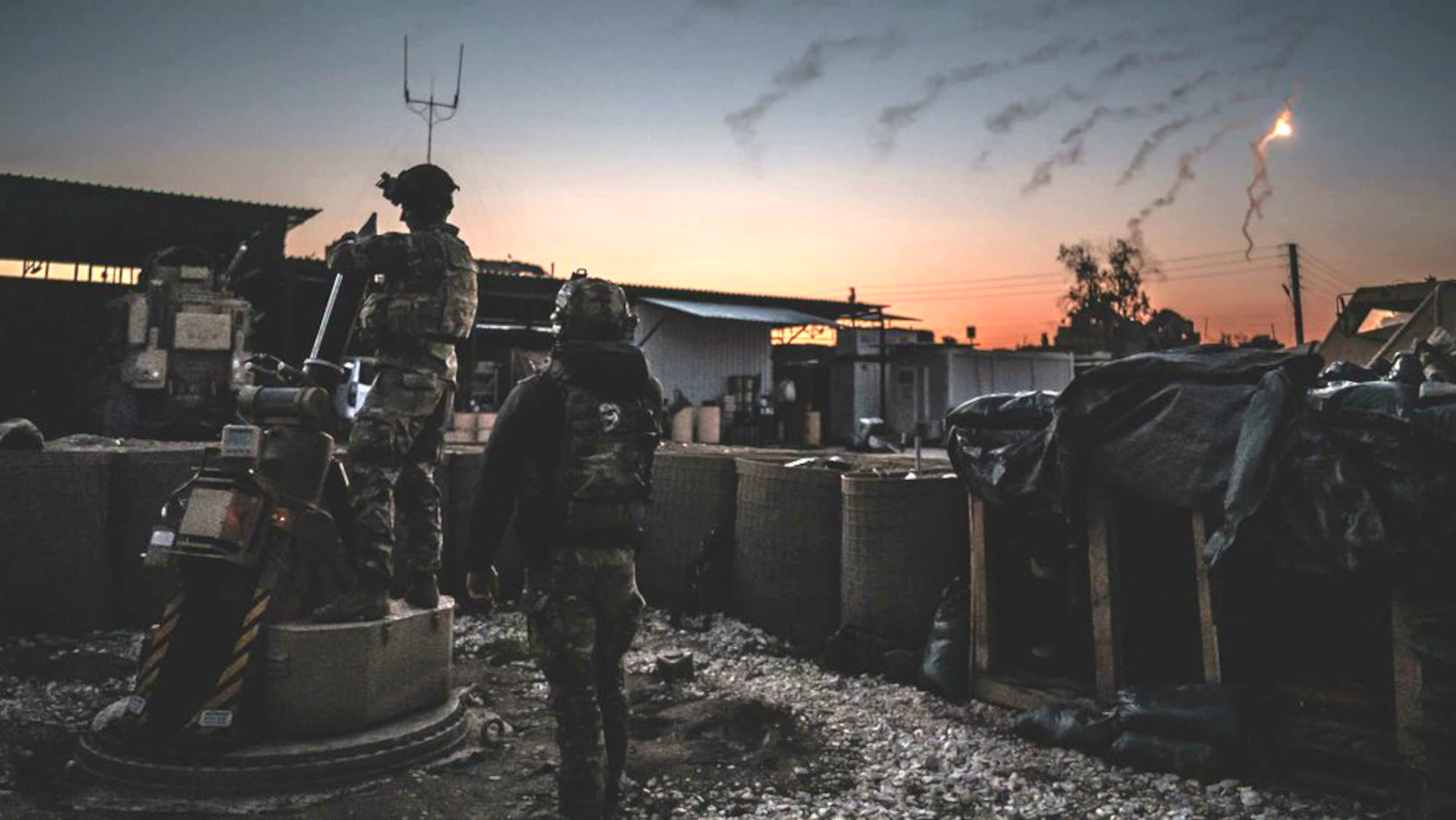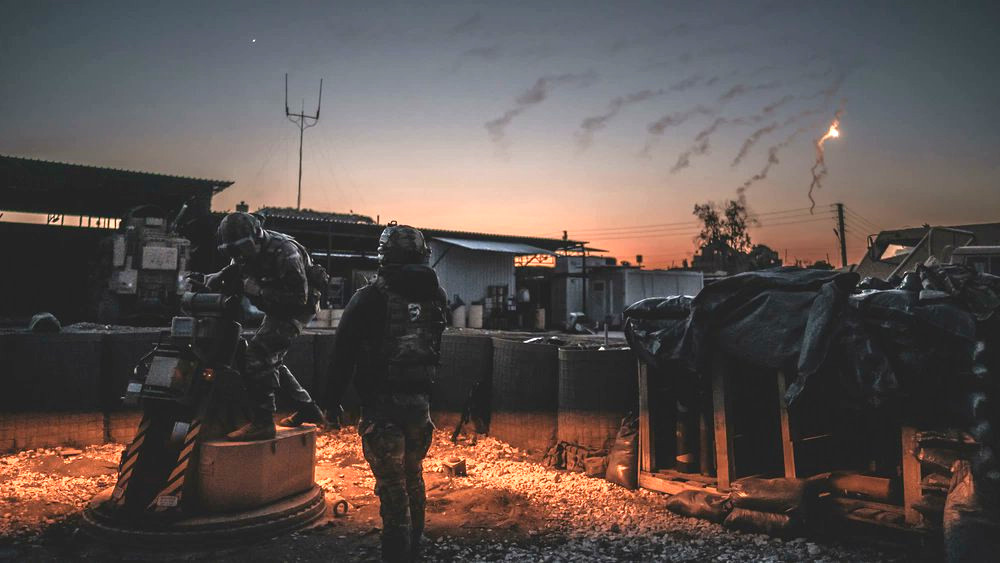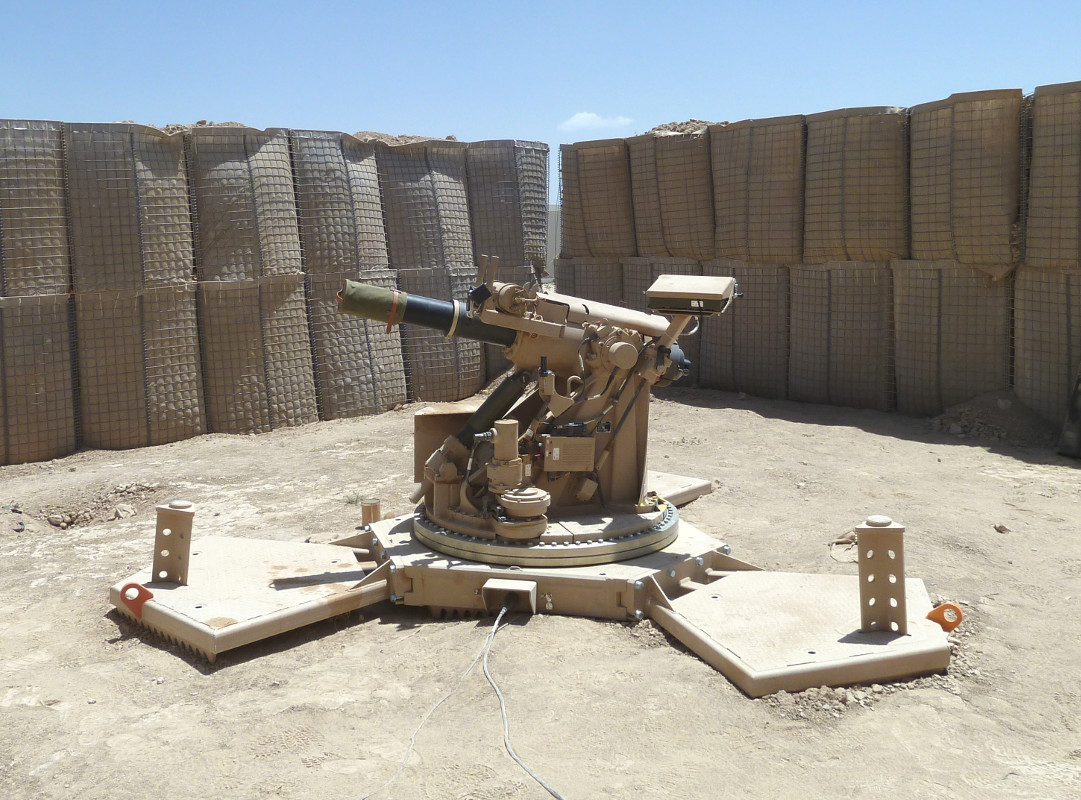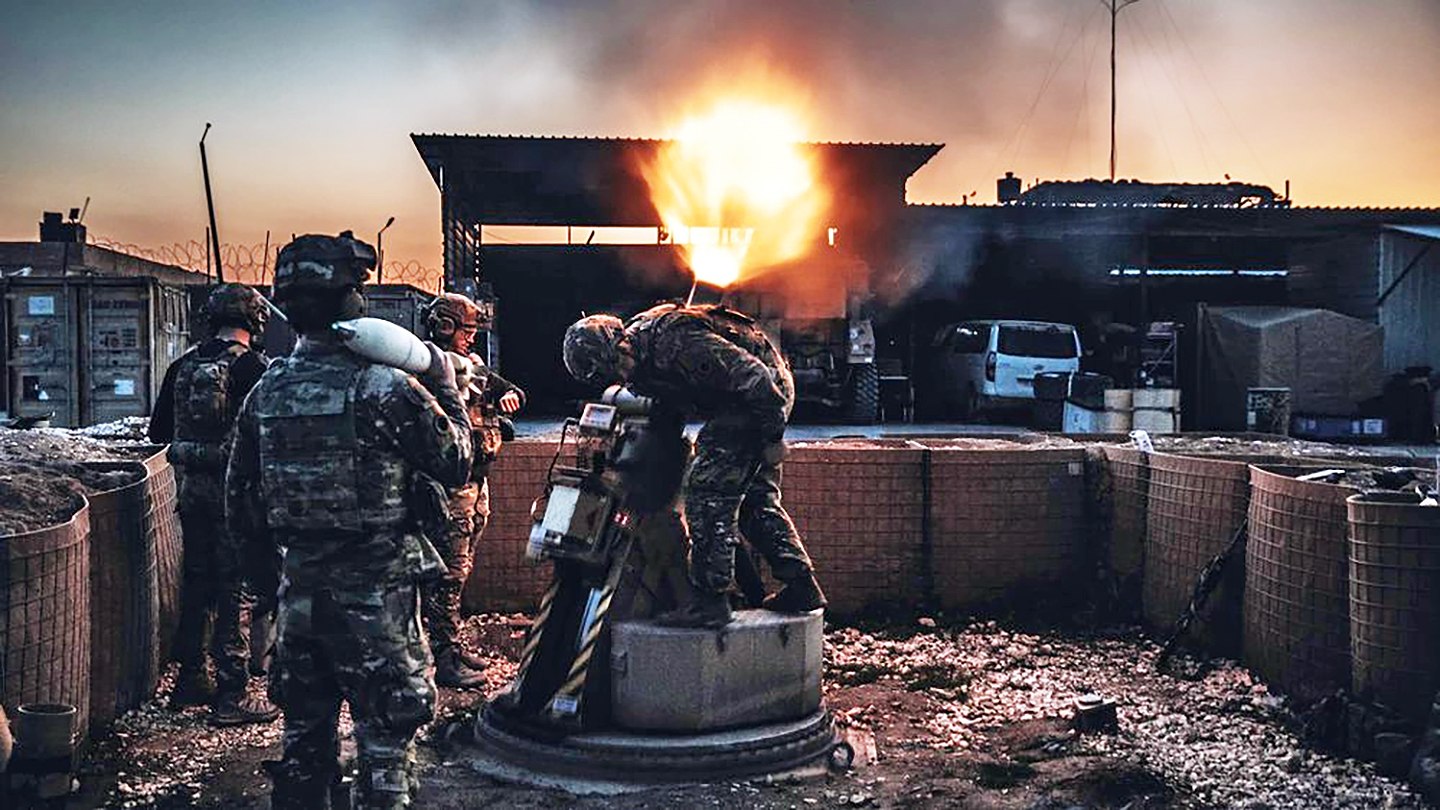The U.S. military’s main special operations task force focused on combating ISIS across the Middle East has released pictures showing personnel firing an XM905 Advanced Mortar Protection System, or AMPS, in Syria. The XM905 is a turreted, computer-assisted 120mm mortar specially developed to help provide an added layer of defense at forward operating bases. The complete system looks like it could belong in a video game like Call Of Duty: Modern Warfare or Command & Conquer.
Combined Special Operations Joint Task Force-Levant (CSOJTF-L) posted the pictures, which it said were taken at “a fire base in the al Shaddadi region” of eastern Syria, on Twitter yesterday. SOJTF-L subsumed Special Operations Joint Task Force-Operation Inherent Resolve (SOJTF-OIR) in 2021 and now provides an over-arching headquarters overseeing U.S.-led coalition special operations forces fighting ISIS in Syria, Iraq, Lebanon, and Egypt. AMPSs have been deployed at forward bases in Syria since at least 2018, as The War Zone has reported on in the past.
“Coalition forces fire 120mm illumination rounds using an XM905 Advanced Mortar Protection System,” the accompanying Tweet says, referring to rounds that carry a large flare suspended under a parachute that is released after being fired. “Illumination rounds can be used to disclose energy formations, to signal, or to mark targets.”

It’s unclear which of these tactics, if any, the personnel may have been carrying out when the pictures were taken, or if it was simply a drill to maintain proficiency with the weapon system. Still, it does help highlight the purposes for which the AMPS was designed.

In service since 2011, the AMPS consists of a 120mm XM908 mortar on an electrically-powered turret, which is able to rotate 360 degrees. The weapon is fitted to a large base plate stabilized by three pentagonal ‘feet.’

Unlike many traditional mortars, the XM908 has a recoil mechanism, which reduces the shock of firing and helps improve accuracy as a result, and overall it looks more like a small howitzer. The weapon is a derivative of the Israeli-designed Elbit Cardom mortar known as the Recoil Mortar System 6-Light (RMS6-L), which is also fitted to some variants of the U.S. Army’s Stryker wheeled armored vehicle.
In addition to illumination rounds, the mortar can fire high-explosive types to attack enemy forces, as well as ones that produce billowing white smoke that can be used to conceal friendly forces or mark targets. Precision-guided mortar rounds also exist that use GPS-assisted or laser guidance, the latter of which are capable of hitting moving targets, that are compatible with this weapon.
Most importantly, the XM905 features a computer-assisted Enhanced Mortar Targeting System (EMTAS), which can automatically fire at any target coordinates the operator inputs. This provides immense flexibility since the weapon can be operated by a small team and quickly fired at one target and then readily redirected to engage others. The system can slew the turret 180 degrees in just 12 seconds, according to information previously released by the Pentagon’s Combating Terrorism Technical Support Office (CTTSO). CTTSO was renamed the Irregular Warfare Technical Support Directorate (IWTSD) in 2021.

Altogether, the AMPS provides valuable additional firepower and other capabilities, such as the ability to help illuminate the surrounding battlefield, for forward-deployed special operations forces in remote or austere locations like Syria. It was not necessarily surprising to see the turrets in use there back in 2018 or that they are still being employed.
The video below shows an XM905 AMPS at a U.S. military forward base in Syria in 2018.

Despite various events that have prompted uncertainty about the future of their mission in Syria, American forces continue to be deployed at various locations in the eastern half of that country. For those bases, they continue to be very active in combating ISIS in cooperation with local, predominantly Kurdish partner forces. Just last week, four U.S. servicemembers and a military working dog were wounded in the course of a helicopter raid in northeastern Syria. That operation led to the death of Hamza al-Homsi, a senior ISIS leader, according to U.S. Central Command (CENTCOM).
U.S. forces in Syria also routinely face rocket and drone attacks, and other harassment, from various groups in the country, including ISIS and Al Qaeda’s franchise there. Groups loyal to the regime of Syrian dictator Bashar Al Asad, including Iranian-backed militias, also present very real threats.
On February 14, American personnel in Syria shot down an Iranian-made drone using an unspecified “fixed-site air defense system,” according to CENTCOM. The uncrewed aircraft appeared to be conducting surveillance of another coalition forward base in the country called Mission Support Site Conoco.
Altogether, with the coalition mission in Syria very much ongoing and the myriad threats that U.S. forces, as well as their allies and partners, face there, the futurist AMPSs look set to keep helping protect forward bases in the country for the foreseeable future.
Contact the author: joe@thedrive.com
